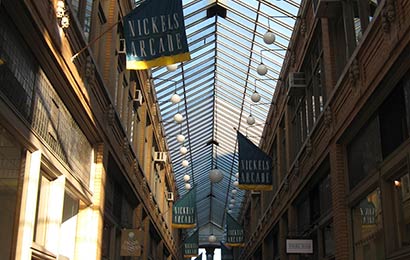Sustainability

Glass skylight illuminates historic shopping arcade.
Before implementing any energy conservation measures to enhance the sustainability of a historic building, the existing energy-efficient characteristics of the building should be assessed. Buildings are more than their individual components. The design, materials, type of construction, size, shape, site orientation, surrounding landscape and climate all play a role in how buildings perform. Historic building construction methods and materials often maximized natural sources of heating, lighting and ventilation to respond to local climatic conditions. The key to a successful rehabilitation project is to identify and understand any lost original and existing energy-efficient aspects of the historic building, as well as to identify and understand its character-defining features to ensure they are preserved. The most sustainable building may be one that already exists. Thus, good preservation practice is often synonymous with sustainability. There are numerous treatments—traditional as well as new technological innovations—that may be used to upgrade a historic building to help it operate even more efficiently. Increasingly stricter energy standards and code requirements may dictate that at least some of these treatments be implemented as part of a rehabilitation project of any size or type of building. Whether a historic building is rehabilitated for a new or a continuing use, it is important to utilize the building’s inherently-sustainable qualities as they were intended. It is equally important that they function effectively together with any new measures undertaken to further improve energy efficiency.


